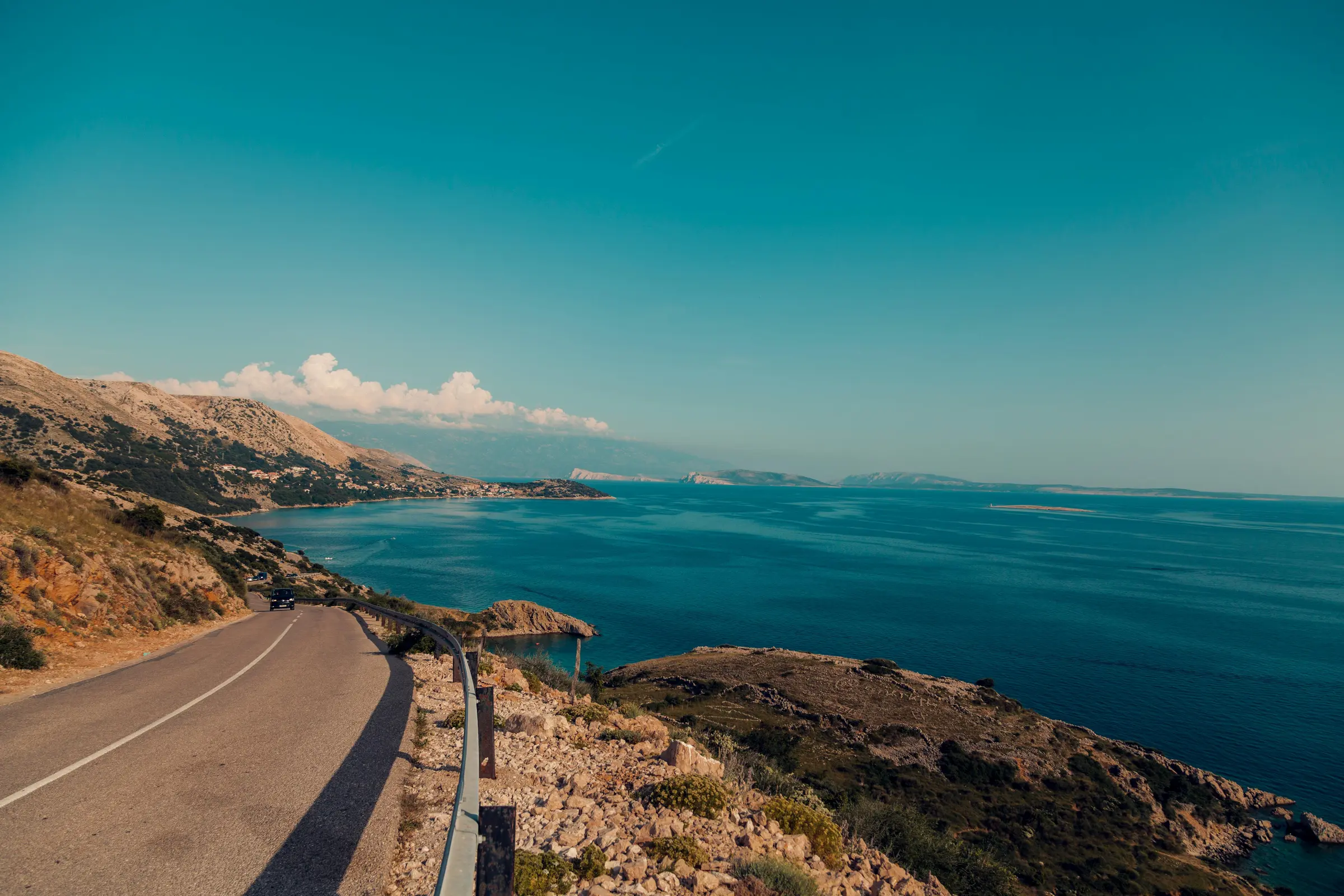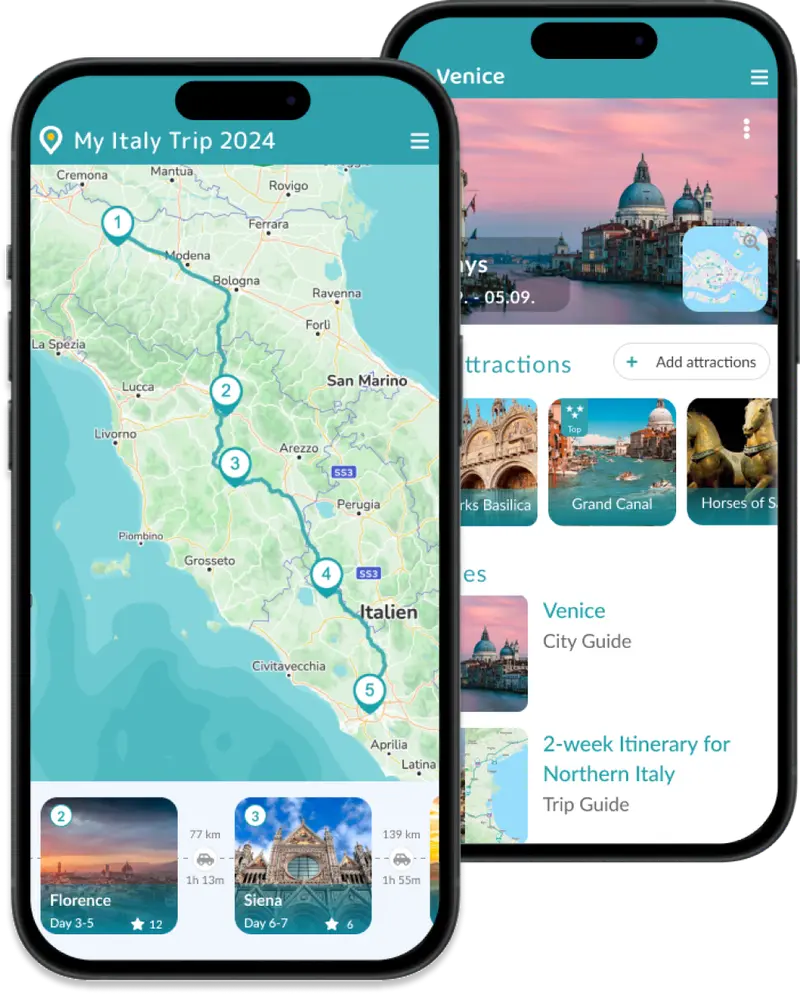Turin, the little Paris of Piedmont, exudes effortless royal elegance, and is perfect for an extended weekend getaway. Nestled at the foot of the Alps, this widely underrated city blends French style with the quintessential Italian lifestyle. Turin enchants visitors with its splendid Savoy residences, including the Palazzo Reale, and the iconic .
What many also don't know is that Turin is home to the oldest in the world, featuring the most significant collection of Egyptian antiquities outside Cairo. Noteworthy is the , a green oasis along the River Po, perfect for leisurely strolls. The former capital of Italy also boasts a rich coffee and chocolate culture, showcased in its numerous historic cafés and chocolatiers. The elegant arcades, stretching for 18 kilometers, invite you to relax with a Bicerin or a Cioccolata calda.
Top Highlights of Turin










Inspiration
Travel Information
How long should you stay?
For Turin, an extended weekend of three full days is ideal. This allows you to see all the major attractions.
With 5 days, you'll have enough time to also take day trips, including visits to the Savoy residences.
Best Time to Visit
Generally, spring and early autumn are the best times to visit Turin, offering favorable weather and vibrant cultural events.
- Spring brings warmer weather and blossoming of flowers, with temperatures ranging between 13°C (55°F) and 20°C (68°F). Expect a mix of mild and cool days with occasional rain showers. March has fewer crowds, April warms up with Easter celebrations, and May enlivens outdoor spaces despite being the wettest month.
- Summer is perfect for gelato lovers and music festival enthusiasts, with events like the Kappa Futur Festival in July. Temperatures range from 26°C (79°F) in June to 29°C (85°F) in July, cooling slightly in August. The city buzzes with activity, though July is the hottest month. August tends to be quieter as many locals go on holiday.
- Autumn is often praised as the best time to visit Turin, offering pleasant weather with daytime temperatures around 23°C (73°F) and nighttime temperatures dropping to 12°C (53°F). September and October feature events like MITO Settembre Musica and the Turin Chocolate Festival, along with beautiful autumn colors.
- Winter in Turin is chilly, with daytime averages of 7°C (44°F) and nights around -2°C (28°F). It's the least rainy season but can be gloomy. December transforms the city into a festive wonderland with Christmas markets and ice skating. January offers winter sales, while February is known for ski activities and Carnival celebrations. Despite the cold, winter has its own allure, offering a different perspective of the city.
How to get to Turin

By Train:Porta Nuova and Porta Susa are Turin's main train stations, with high-speed Trenitalia and Italo trains connecting Turin to major Italian cities like Milan, Venice, and Rome. International connections are also available, making train travel a convenient option for visitors from Europe.
By Car: Arriving in Turin by car offers flexibility to explore the Piedmont region. The city is accessible via major highways like the A4 from Milan and the A6 from Savona. Note that the city center is regulated by a ZTL zone, restricting vehicle access. Parking is available outside the ZTL, with various options ranging from street parking to garages.
Fancy a roadtrip?
Be inspired by our hand-picked road trips.

History
Turin, nestled in the heart of Italy's Piedmont region, has had a turbulent history. Originally founded by the Celtic Taurini tribe nearly 2,400 years ago, Turin, or Torino in Italian, translates to little bull, a symbol that proudly remains part of the city's flag today. Its early importance was marked by its fertile lands and strategic location along the River Po, making it a target for various conquerors, including Hannibal during his Alpine campaign and later the Romans, who left a significant imprint on the city's layout and architecture.
The fall of the Roman Empire led to Turin being conquered by barbarian tribes such as the Goths, Lombards, and Franks. However, it was the marriage of Countess Adelaide to Count Odo of Savoy in 1046 that began a long association with the House of Savoy, shaping Turin's destiny for centuries. By 1280, Turin acknowledged the supremacy of Savoy after periods of conflict and semi-independence .
The Renaissance period saw Turin emerge as a significant center of power and culture when Emanuele Filiberto of Savoy made it the capital of his duchy in 1560, bringing the revered Shroud of Turin to the city. This era heralded significant architectural and cultural development, laying the groundwork for Turin's reputation as a Baroque city.
The city's pivotal role in Italy's Risorgimento, serving as the first capital of a unified Italy from 1861 to 1865, further cemented its place in Italian history. Turin was transformed into an industrial powerhouse by the 20th century, home to FIAT (Fabbrica Italiana Automobili Torino), founded in 1899, signifying its role in Italy's automotive industry.
In modern times, Turin has evolved into a key industrial and cultural hub, with its economy diversifying beyond its traditional automotive sector. High-technology products, tourism, and a rich cultural scene, including museums, galleries, and historical sites, now play significant roles in the city's development. Hosting the 2006 Winter Olympics marked a notable highlight, showcasing Turin's versatility and global appeal.





